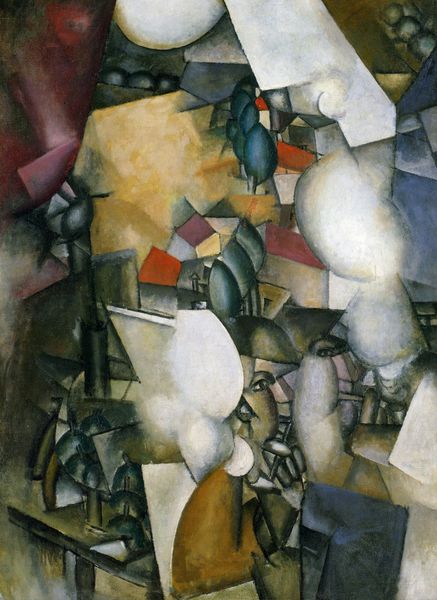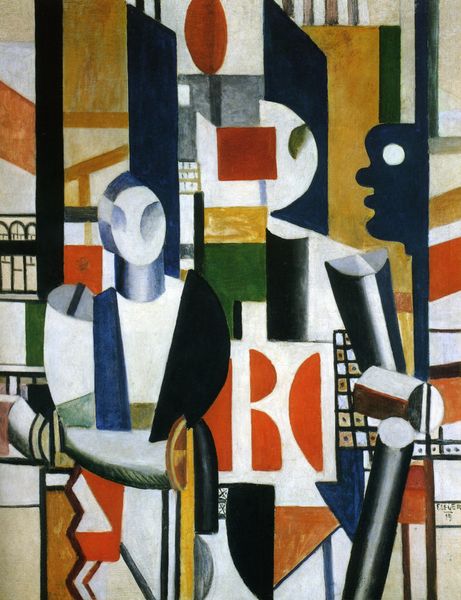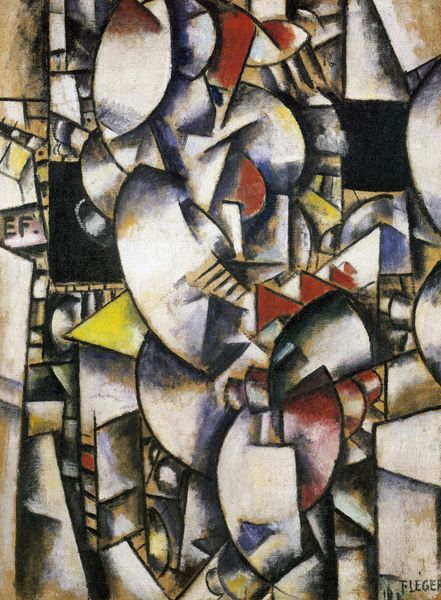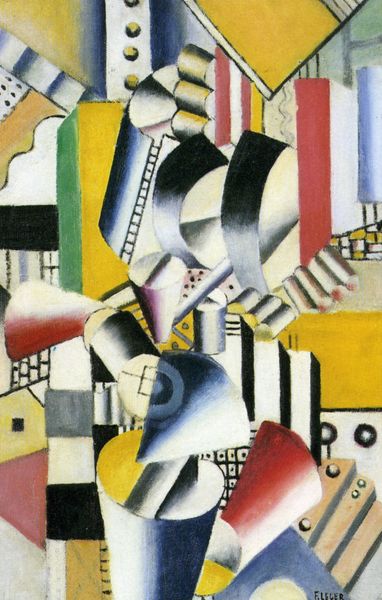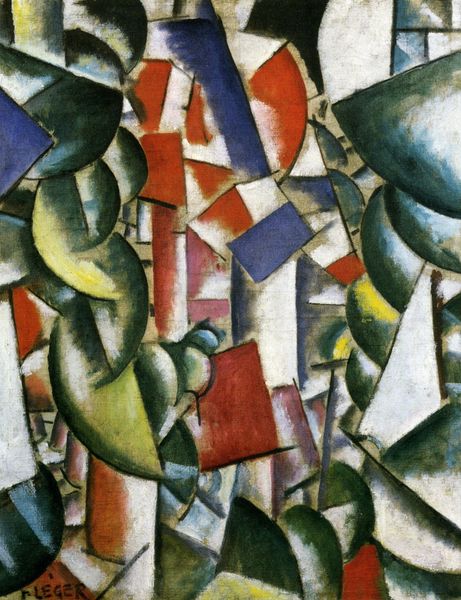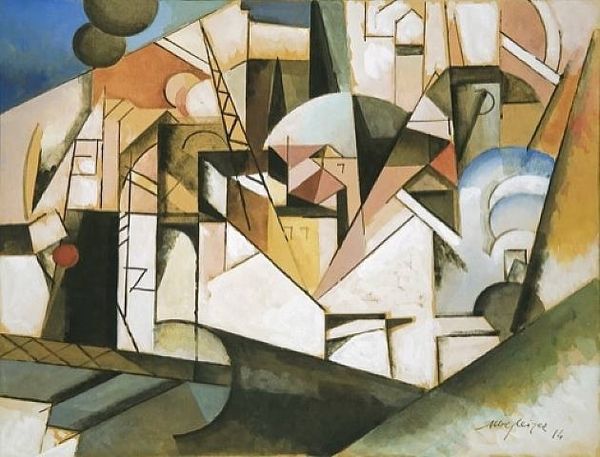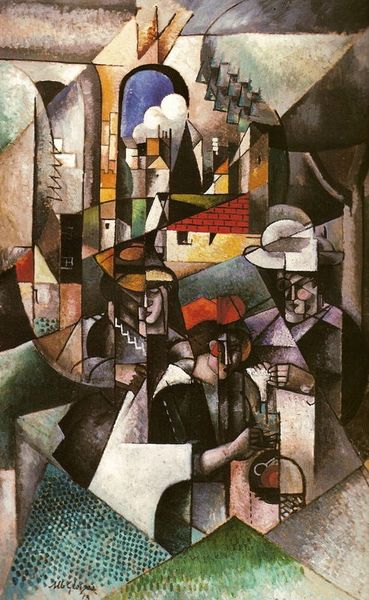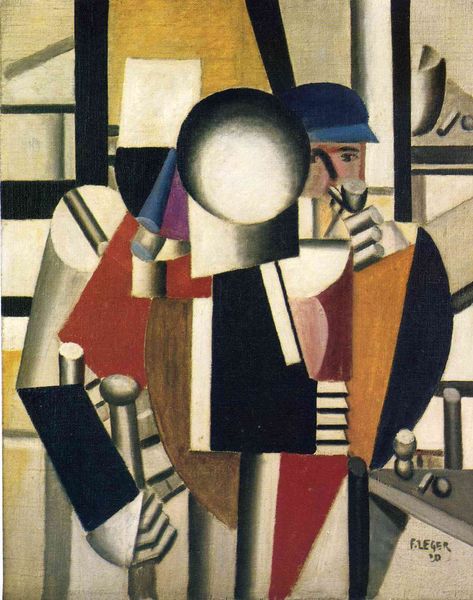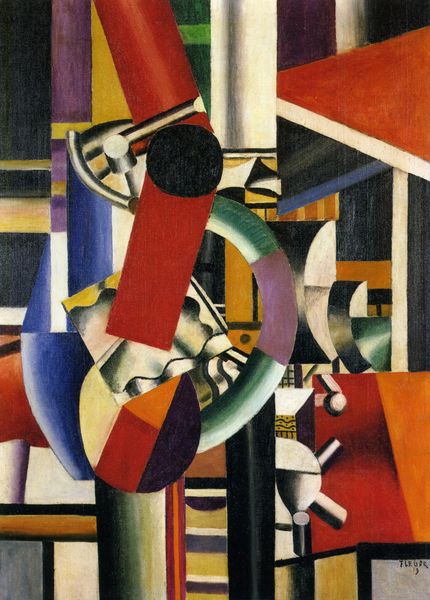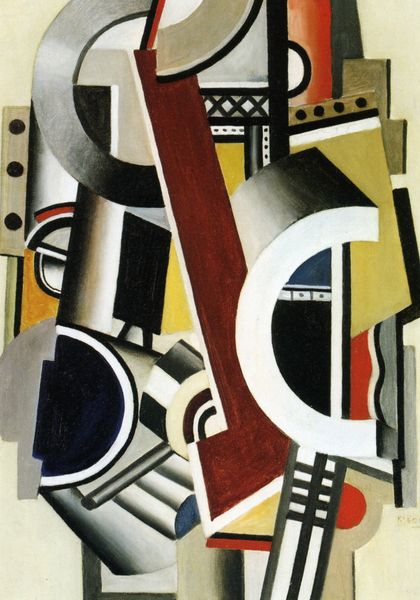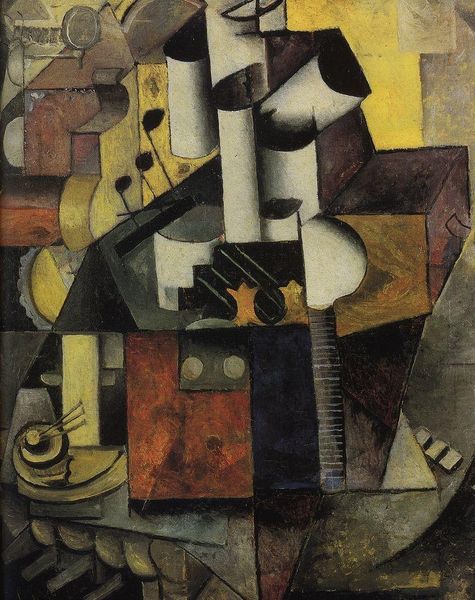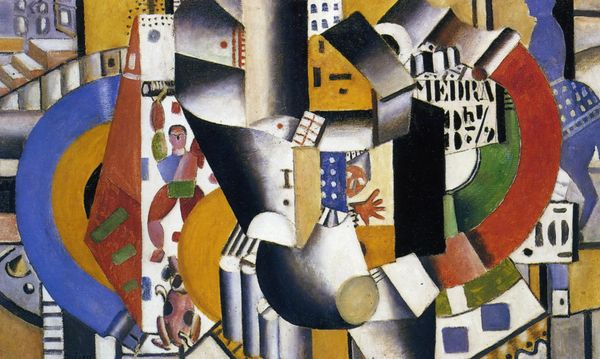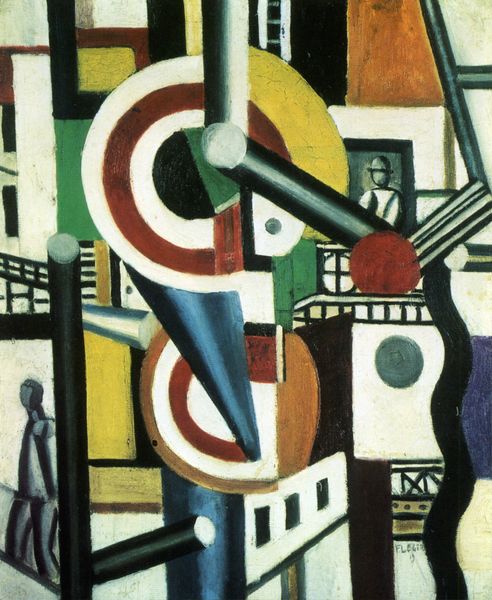
oil-paint
#
cubism
#
oil-paint
#
oil painting
#
geometric
#
abstraction
#
cityscape
Copyright: Public domain US
Curator: Fernand Léger's "Smoke," completed in 1912, offers a fascinating early glimpse into his Cubist explorations, using oil paint to depict what appears to be an urban landscape. Editor: It's striking how cold the painting feels at first glance. Despite the potential warmth suggested by the title "Smoke," the stark geometry and limited color palette create an almost alienating atmosphere. Curator: Well, the title "Smoke" likely relates to the industrialized landscape Léger was witnessing around him, perhaps factories or the haze of a modernizing Paris. Cubism allowed artists to portray this new reality with fractured forms, mirroring the disruptions and complexities of urban life. Editor: Absolutely, you can feel the rise of industrialization shaping not just the scenery, but also the art itself. But who bears the brunt of it? Whose voices were consumed by the literal and metaphorical smoke of modernity? We have to consider the human impact of this transformation. Curator: Those are essential questions. Considering its socio-historical context, we see how Léger uses these flattened, interlocking planes to depict buildings and urban forms. It's as though he's dismantling traditional perspective, reflecting the shattering of old social structures. Editor: I see the dismantling but I wish the work took greater accountability. Is the piece simply a visual representation, or does it actively engage with the complex social realities behind the rapidly transforming environment? Art is never truly neutral, so how did Leger’s socio-political position inform this Cubist depiction? Curator: It’s a vital inquiry to place this piece and other Cubist art within the avant-garde art world. This period of history and these radical experiments challenged the Academy’s dominance and its political status, giving space to new voices. Editor: It makes one ponder how art can challenge the very institutions it reflects. I appreciate the intellectual exercise this painting demands from its audience and its engagement with some of the sociopolitical currents of the time. Curator: Understanding this piece requires an engagement with its historical context. Léger and other Cubists offered ways to rethink representation at a time of massive change, whether or not it makes an active stance in our contemporary understanding. Editor: Still, situating art within those frameworks provides such valuable insight. I leave this viewing experience pondering what art owes society.
Comments
No comments
Be the first to comment and join the conversation on the ultimate creative platform.
